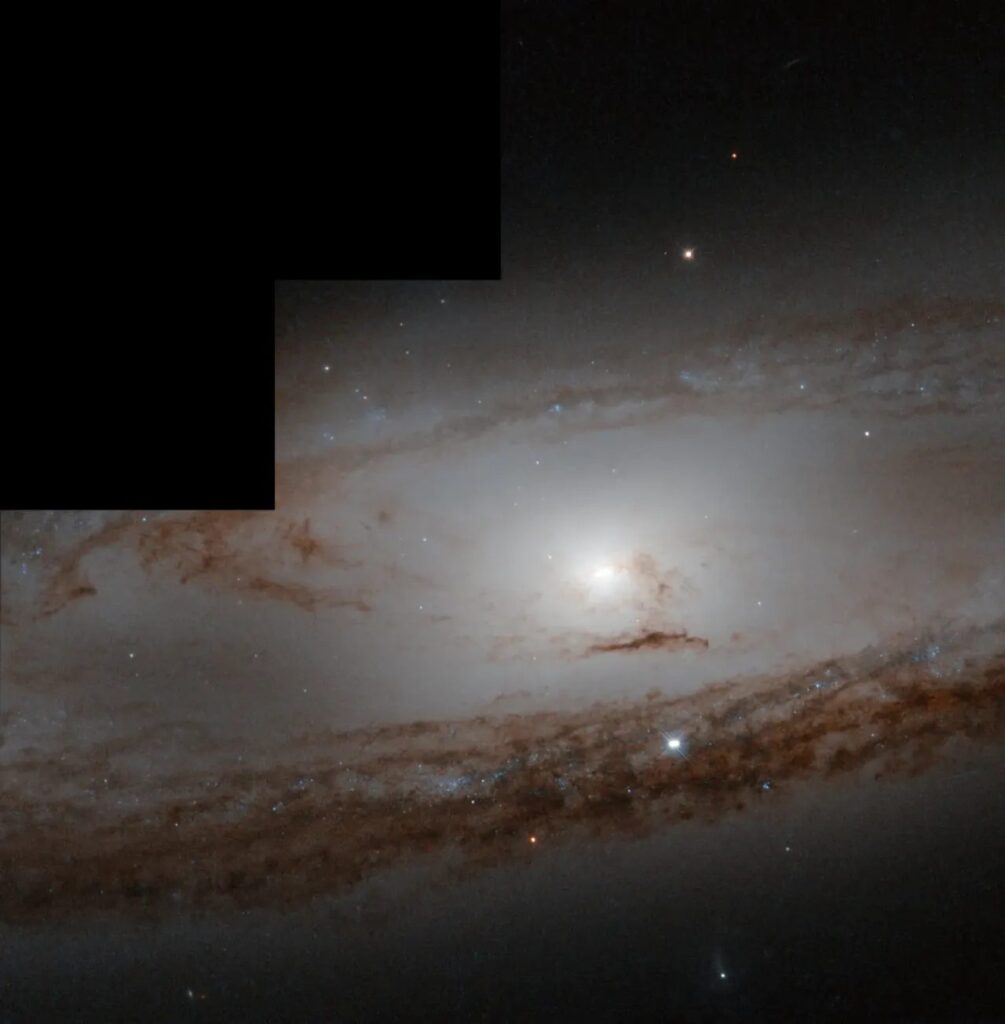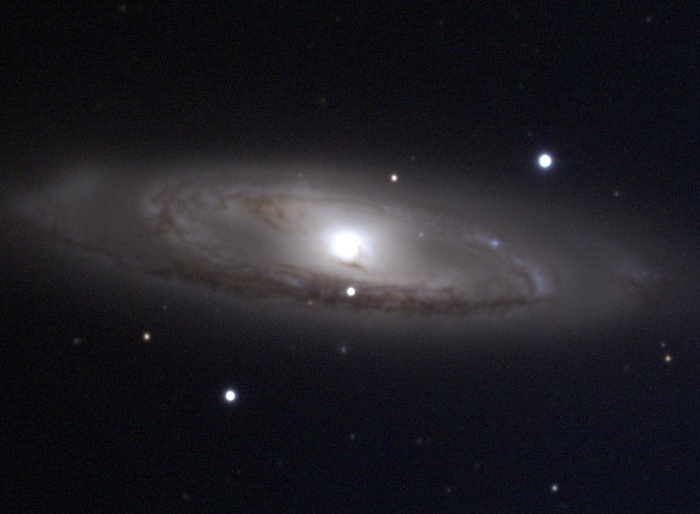M65, also known as NGC 3623, is a fascinating spiral galaxy located in the constellation Leo. It is part of the Leo Triplet along with M66 and NGC 3628.
The galaxy was discovered by the British astronomer Charles Messier on March 1, 1780, along with its companion galaxies M66 and NGC 3628. Messier included it as the 65th entry in his catalogue of non-cometary objects.
Basic Characteristics
M65 is classified as a spiral galaxy with the morphological type SAB(rs)bc, indicating it has a weakly-barred (SAB) structure, a somewhat ring-like feature around the bar (rs), and moderately wound spiral arms (bc). It is situated approximately 35 million light-years away from Earth, and spans about 90,000 light-years in diameter, making it slightly smaller than our Milky Way galaxy.
Structure and Composition
M65 exhibits a bright nucleus and well-defined spiral arms, which are rich in stars, gas, and dust. Its spiral structure is typical of a barred spiral galaxy, with arms winding outward from a central bar. The spiral arms contain regions of active star formation, visible as bright, young stars and glowing nebulae. These regions are characterized by hot, massive stars that ionize the surrounding gas.
The galaxy contains significant amounts of dust and gas, which are essential for the formation of new stars. Dust lanes can be seen tracing the spiral arms, indicating regions of higher density where star formation is occurring.
The presence of a weak bar in M65 influences the dynamics of the galaxy, playing a role in driving gas inflows towards the centre and triggering star formation. Gravitational interactions with surrounding galaxies in the Leo Triplet may influence the morphology and evolution of the galaxy.
The galaxy has been extensively studied across various wavelengths, from radio to X-rays, revealing its structure, dynamics, and stellar populations.

Observation
The best time to observe M65 is during the spring months, specifically from March to May when the constellation Leo is well-positioned for viewing in the night sky. During these months, Leo rises in the eastern sky in the evening and remains visible for most of the night.
While M65 is better suited for observations in the northern hemisphere, it can also be observed from the Southern Hemisphere at locations closer to the equator. However, southern observers may have a shorter window for viewing the galaxy, and it may appear lower in the sky compared to northern latitudes.
M65 is visible with small to medium-sized telescopes under dark skies. It appears as a faint, elongated patch of light with a bright core and spiral arms. In 50mm binoculars it can just be glimpsed as a faint fleck of light.




